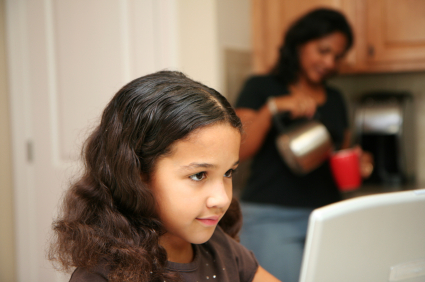Plug the Holes: Internet
© 2007 Teresa Cook

Our homes should be safe havens where children can learn, love, and grow in the
Lord. If we unwisely leave openings for pornography to enter, we give Satan an
opportunity to gain a foothold on their lives.
Not too many years ago, when porn was relegated to adult bookstores in the seedy
section of town, it was relatively easy to keep sexually explicit material away
from children. Since the advent of the Internet, all that has changed. Statistics
say that 90 percent of children ages eight to eighteen have already been exposed
to hard-core pornography.1
Less than ten years ago, the average age of first exposure was eleven. Some
researchers now believe that age has dropped to eight.2
Despite these dismal statistics, you can take action to porn-proof your home.
Internet
The Internet is a pornographer's dream. Not only can he anonymously distribute his
wares to willing customers, he can give away free "samples" and snare new clientele.
In fact, promoters of the sex industry deliberately target children with many
ingenious methods, including using popular cartoon characters or brand names in
their url's to trick children into visiting their sites. The more this happens,
the greater the chance that the child will become hooked on pornography and
eventually become a paying customer.
Take the following steps to protect your child:
- Filter all computers in your home. The safest way is to use a server-side filter
that cannot be bypassed such as BSafe Online found at
www.besafehome.com. If you
choose to use a blocking program that permits certain users to bypass the filter, be
sure to buy one that gives you the ability to monitor Internet activity or purchase
an additional program like Covenant Eyes that sends daily email updates on sites
visited. Some products also allow you to set time controls on Internet use. Visit
www.filterreview.com or
www.internetfilterreview.com to
compare products.
- Educate yourself about the Internet. Visit
www.safefamilies.org/ and click
on "Parents" for a crash course on the Internet and to download their Internet Safety
Manual. Order Web Wise Kids' game program, Wired with Wisdom, to learn the ins and
outs of the Internet at www.webwisekids.org.
- Check your computer history frequently (see safefamilies.org link above).
- Lay down clear rules about Internet use and make sure they are followed.
Depending upon your family situation, these may include:
Internet access is only allowed under adult supervision.
No Internet access is allowed unless a parent is home.
Strict time limits on Internet use for each family member must be followed.
Do not use the Internet at a friend's home.
Never use an Internet connection without a filter.
Never open attachments or follow links sent by a stranger.
Never give out personal information on the Internet or through email.
- Keep all computers in open family areas for accountability.
- Prohibit or monitor chat room use. Sexual predators prowl chat rooms and use
pornography not only to arouse themselves but to desensitize victims, breaking down
their inhibitions a little at a time.3
- Do not allow your child to use peer-to-peer (P2P) file sharing systems such as
Limewire, Morpheus, Grokster, or Kazaa that allow children to download free pornography
and can bypass some filters. For more on P2P, go to
www.cwfa.org/articles/5676/CWA/pornography/index.htm.
- Assess online games for inappropriate content. Check
www.ccgr.org/index.php
for Christian reviews of online games. Be sure to also monitor your child's interaction
with other players.
- Keep Internet and email accounts in your name and do not allow your child to have
an online profile. Be in charge of all passwords and parental controls.4
It is your home and you pay for Internet services. You have the right to control what your children
see and send on the Internet.
- Monitor your child's personal web site or blog. Kids often publish too much personal
information about themselves on these sites and lead sexual predators to their door, or
they may post inappropriate comments and draw sexual predators. Web Wise Kids reminds us
these sites are "public domain, not private property."5 As such,
parents have not only the right but the responsibility to read them. For more about social networking
sites, visit
www.safefamilies.org/socialnetworking.php.
- Talk to your children about pornography and the dangers of the Internet. Tell them
to notify you immediately if they stumble onto pornography and react calmly if they do.
Order the free Polly Klaas Internet Safety Kit at
www.pollyklaas.org/internet-safety/guidance-and-resources.html
for statistics and information you can use in discussing the Internet with your children.
- Sit down with your children while they use the computer and express interest
in what they do. Let them know you will be monitoring their Internet use because
you love them and want them to be safe.
The Internet is just one
route by which pornography can enter your home. It takes
vigilance and perseverance to keep porn at bay, but remember—one exposure can
change your child's life. Isn't he or she worth the extra time and energy required
to plug the holes through which pornography can enter your home?
Watch for article two on plugging the holes.